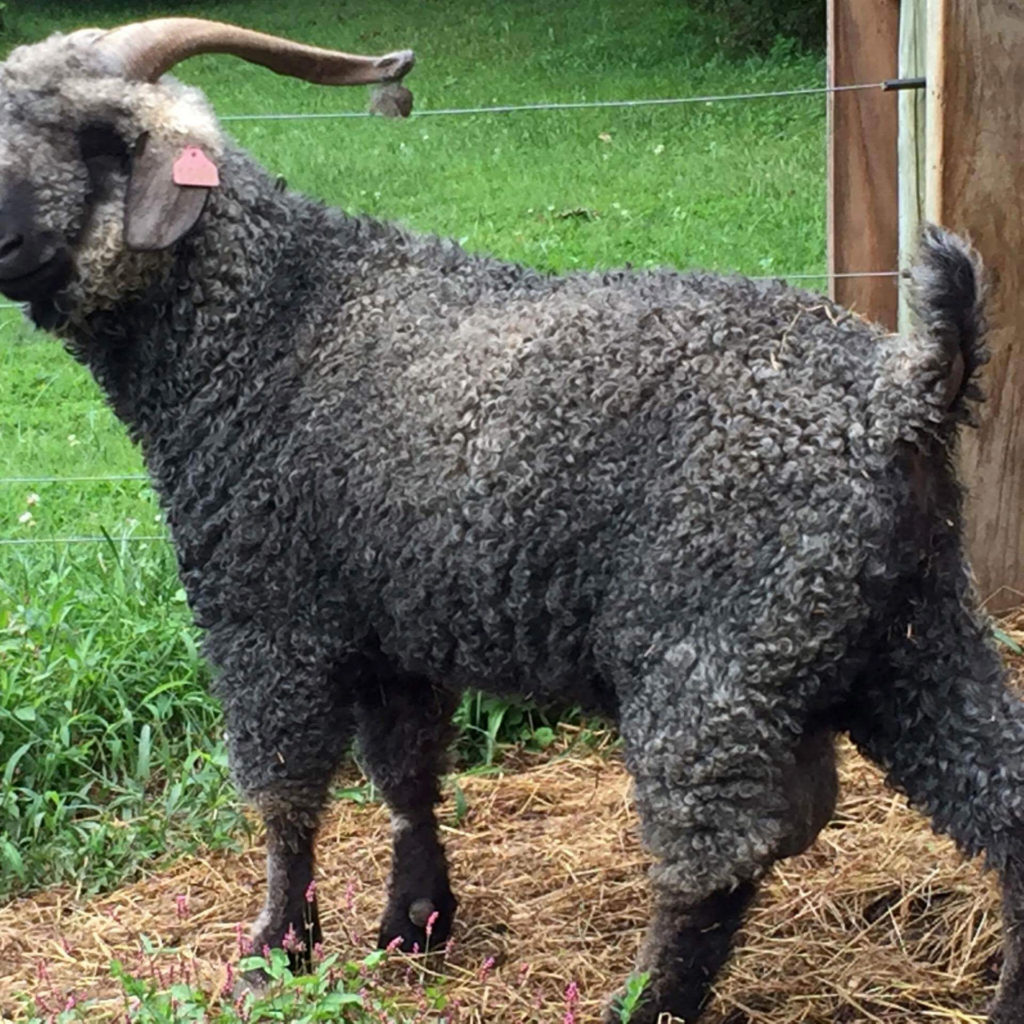As long as humans have worn natural fiber clothing, they have been skirting fleeces and fiber in preparation for all that they make. Skirting is the beginning of all the work and artistry that follows.
There are a lot of opinions on how to do this. My advice is to do a little research; what works for one may be slightly different for another. You are already a special person if you’ve gone and bought a bag of shorn fiber and you are really starting at the beginning.
The goal of skirting is to get the raw fleece as clean as you can from anything other than fiber. You are to remove: dung tags, heavy urine areas, “veg. mat” –Vegetable Material-– hay, straw, burs. And anything else, like nail clippings or debris from the farm. In one sense this can take as much time as you give. It seems like one can always get more and more picky about getting every little thing. That is the goal, all be it illusive. It sells best when it is pristine. So, at the first round of skirting do what you can.
If you are raising the animals, you should note: The longer it takes you per fleece, the more it will change how you do your management of your barn. Try to keep as much hay from getting into the fiber in the first place. Folks that never skirt their own fleeces, usually have the dirtiest animals.
Start by getting a good place to work – stuff will fly in the air and stuff will drop to the ground. Have a container to receive what you’ve worked on. You may want to wear something that you don’t mind if it gets dusty. A lot of people I know stretch netting or chicken wire across a frame, and then flip the whole fleece down on this, and shake it a bit like a gold miner panning for gold. It is a popular method, but not what I do. I find there is no way to avoid putting my own two hands on each fist full of fiber.
I will begin by laying out the entire fleece on the ground – perhaps on cardboard or an old rug or some relatively clean surface – in roughly the shape it was when it was on the animal. This is your first gross attempt at getting out the big stuff. Sometimes you can’t see what the shape of the animal was from spreading it out, in that case just look for a vague pattern. There will be a long strip of fiber that was growing from the animals spine/back. This is called the topline. This area is likely to have caught the most veg-mat. It also is a likely place for kemp fiber or corse hair. So, pull this section or strip of fiber out and throw it away. You will do the same with the general section of fiber that grew low on the legs and near the rear or even underbelly. Often the shearer will have tossed this out before you even see it. However, sometimes in order to be judged at a show the rules will be the fleece should be as it is “from the field” so everything might be there.
Next I move to my indoor or comfortable place to sit/stand while I do a more detailed skirt. This is when I touch all the fiber. Pick up your first hand full, upon looking closely you will see things in there that you need to pull or shake out. Sometimes things are stuck and you need to part the locks a little. Some material you just have to pluck out with your fingers, but that is slow, so what ever shakes or falls out is great. You will also notice patterns in things caught at either the tips or the base. In that case, hold the lock a small bunch at a time at the opposite end and shake. Or hold some in one hand, knock back and forth with index finger so it looks like a dogs tail wagging.
The job is monotonous. You will likely need to take a few breaks. After you do several fleeces, you will definitely be better at analyzing the value of the fiber. First, you’ll see your own time tied up in it. Second, you will have intimately touched a lot of fiber. Third, you’ll start developing an understanding of the variety of the feel of one fleece to another or within a fleece. And, finally you’ll develop skill and an amazing appreciation! One of history, wholeness, and fiber and textile art.


Thankyou for your advice. I have skirted and cleaned many sheep fleeces, but never mohair.